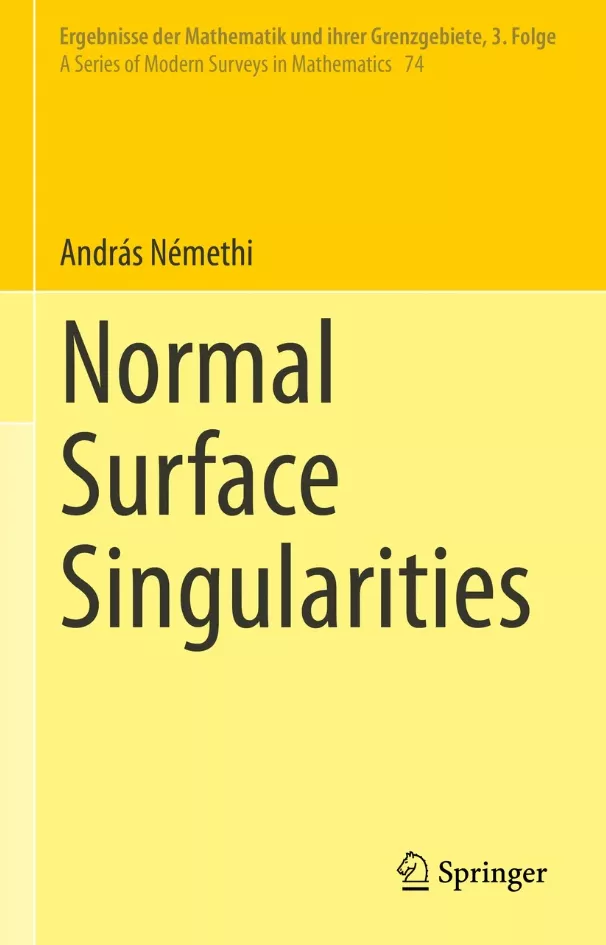The monograph entitled Normal Surface Singularities by András Némethi, research professor at the ELKH Alfréd Rényi Institute of Mathematics (Rényi Institute) has been published by the German Springer publishing house in one of its most important series, Ergebnisse der Mathematik und ihrer Grenzgebiete. In this volume, the author summarizes, among other things, the main milestones of the theory of surface singularities and the research results of recent decades, and develops the singularity theory of surfaces over complex number fields. He also presents his new theory of lattice cohomology, which provides a bridge between the topology of three-dimensional spaces and the geometry of algebraic complex surfaces. The volume is available in the library of the Rényi Institute.

Singularities are unusual phenomena that deviate from regular behavior and therefore cannot be characterized by conventional analyses. They are also abrupt and have behavioral break lines. They are often found in the natural sciences, such as theoretical physics (Big Bang, black holes), hydrodynamics (turbulence), state diagrams, chemical or physical laws of the microcosm, or even in the psychological-biological responses of the human body (think of Munch’s painting The Scream).
In mathematics, singularities have to be dealt with when, for example, the calculus of smooth manifolds is no longer able to answer our questions, or when finite entities become infinite. In these cases, completely new procedures have to be developed compared to classical methods. Such singularities appear, for example, in the theory of algebraic manifolds. These are shapes that occur as zeros of polynomials, and at certain specific points have fractures and strange gluings.
In his monograph, András Némethi summarizes the main milestones of the theory of surface singularities and the results of the last 40-50 years of intensive international research up to the present day, which have made this field one of the most active central areas of algebraic geometry. He also develops a singularity theory of surfaces over complex number fields, and shows connections with other areas – modern low-dimensional topology, commutative algebra, sheaf theory – and connections with classical theory. The book also includes the author’s new theory of cohomology – lattice cohomology – which provides a bridge between the topology of three-dimensional spaces and the geometry of algebraic complex surfaces. The volume provides many examples to help mathematicians in other fields explore the depths of this field and help younger readers to understand the essential steps, and will hopefully also serve to strengthen the Hungarian school of algebraic geometry.
The volumes in Springer’s Ergebnisse der Mathematik und ihrer Grenzgebiete series, supported by a comprehensive bibliography, provide a high-level, up-to-date summary of a major area of modern mathematics, incorporating open scientific questions related to the subject. Launched in 1932, the series is divided into three phases: 25 volumes were published between 1932 and 1942, 101 between 1943 and 1982, and 74 volumes have been published so far in the ongoing third phase, which started in 1983. The latest is András Némethi's monograph, published in 2022, which is the 200th volume in the series.
As an indication of the quality of the monographs published in the series, they can only be written at the request of the publisher’s editorial board. In the past 90 years, four Hungarian mathematicians, Béla Szőkefalvi-Nagy (1942 and 1967), János Bognár (1974), Tibor Radó (1933 and 1937) and János Kollár (1996), who worked in the United States, have been among the authors of the series.